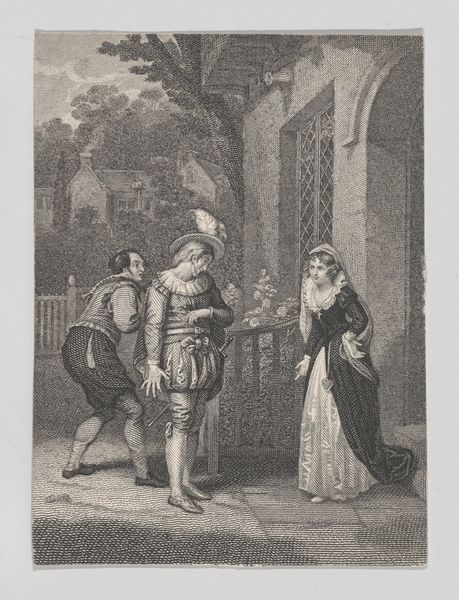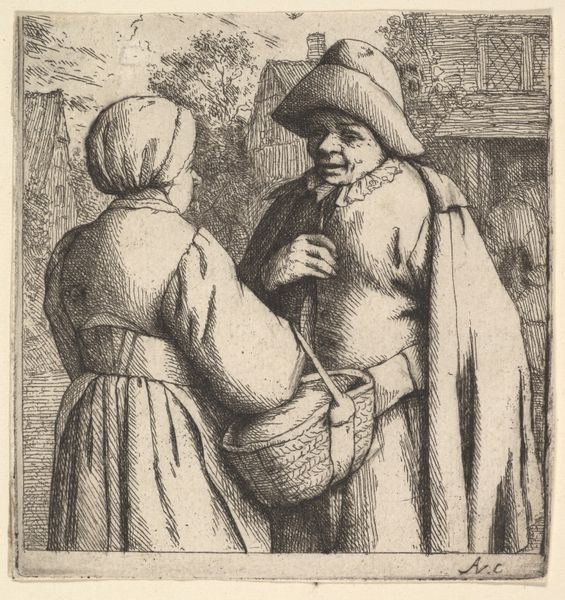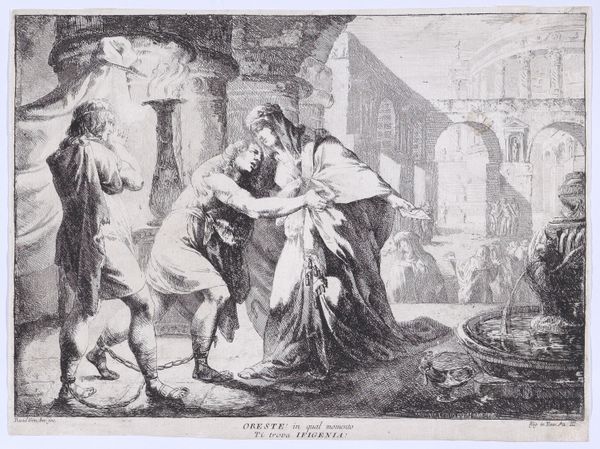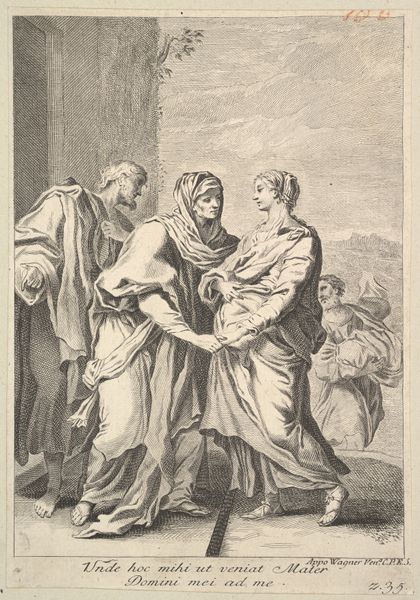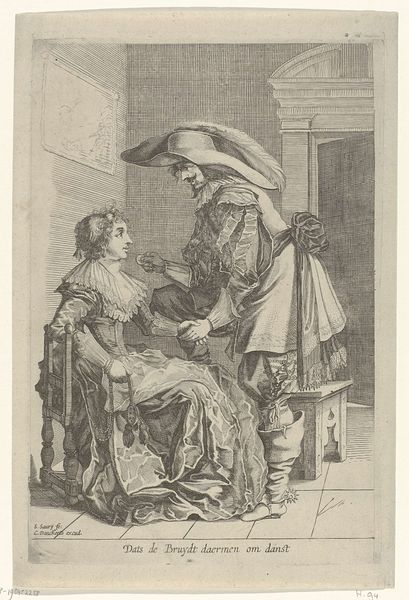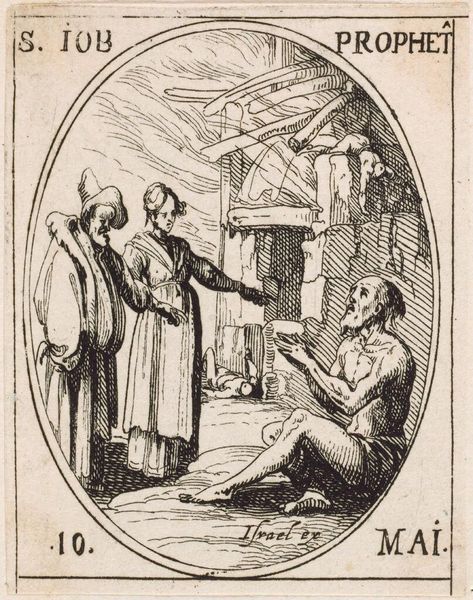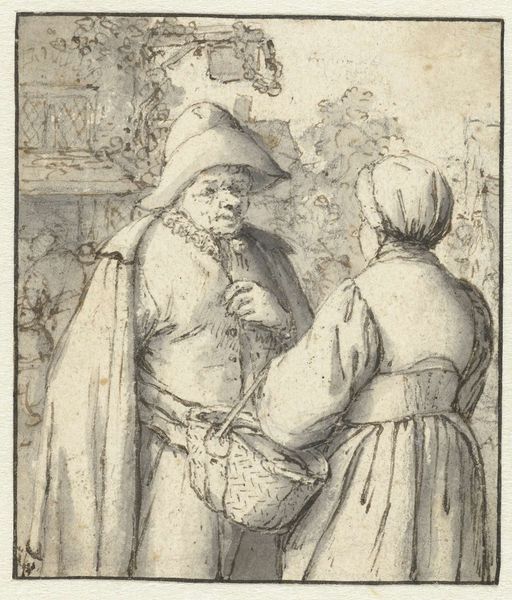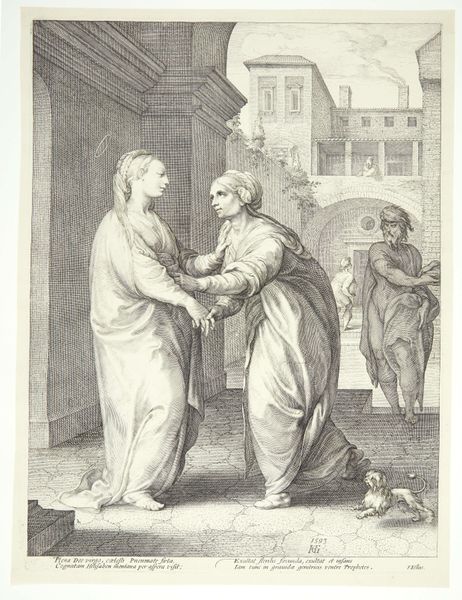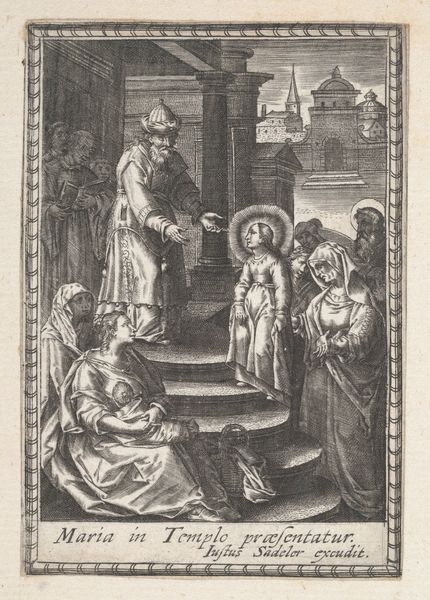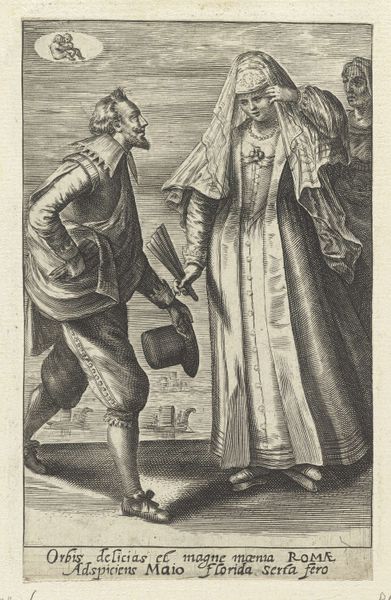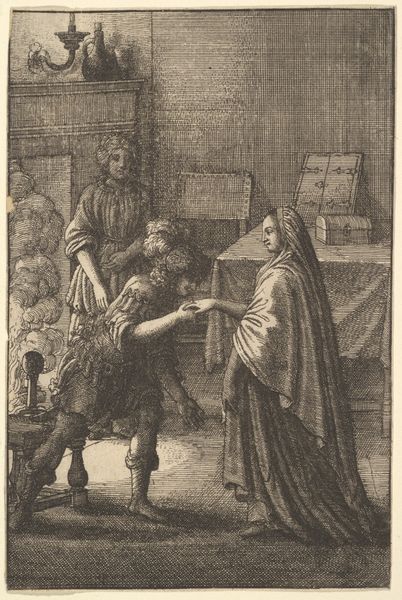
Slagterens ægteskabstilbud (Der Fleischer) 1782
0:00
0:00
Dimensions: 87 mm (height) x 50 mm (width) (bladmaal)
Curator: Daniel Nikolaus Chodowiecki’s print, “Slagterens ægteskabstilbud,” or "The Butcher's Marriage Proposal," created in 1782, offers a glimpse into 18th-century life. What strikes you first about this engraving? Editor: The scene feels so contained, so deliberate. I notice the tools immediately, practically spilling from his apron—the literal tools of his trade are so close to this intimate exchange. Is this intended to reflect how the business of his livelihood is entangled with the concept of partnership? Curator: Precisely. The material reality of the butcher's existence is foregrounded here. Consider the setting: we're right outside his shop. Carcasses hang visibly in the background and that tells us about urban life and how products and labor was made more visible back then. It's not some romantic backdrop. Editor: I am fascinated by the symbolism of the dog—it has a protective stance in relation to the butcher but seems restless and is a fascinating inclusion of animal and human symbolism within this seemingly small picture. Does it signify loyalty? The "domesticated" masculine self perhaps? Curator: It could also point to more than loyalty. Remember dogs at that time were also symbols of societal status and belonging, thus a material assertion of who gets in and who stays out. I am really more captivated by his hands. He's grasping her hands while all of his working implements practically overwhelm the scene, crowding his hands— it's such direct access to a physical encounter! The promise is less about courtship, and more transactional, even involving a kind of labor. Editor: But note her posture; I sense both hesitation and curiosity in her averted gaze, as if she weighs his proposal against other social expectations of that period. It certainly provokes many other questions regarding how the choice of marital and symbolic partners can play an equally valid, cultural role as mere manual dexterity or economic trade? Curator: I think Chodowiecki really makes us confront these kinds of socioeconomic realities of daily life. Marriage, for instance, becomes less an idea and more a profession, a practice with its own methods and its unique tool requirements to get the job done. Editor: An art that blends genre and commerce… it’s an intense convergence in one simple, accessible artwork. Curator: Precisely – material reality expressed in such small detail and a reminder of daily routines as part of our greater history.
Comments
No comments
Be the first to comment and join the conversation on the ultimate creative platform.
